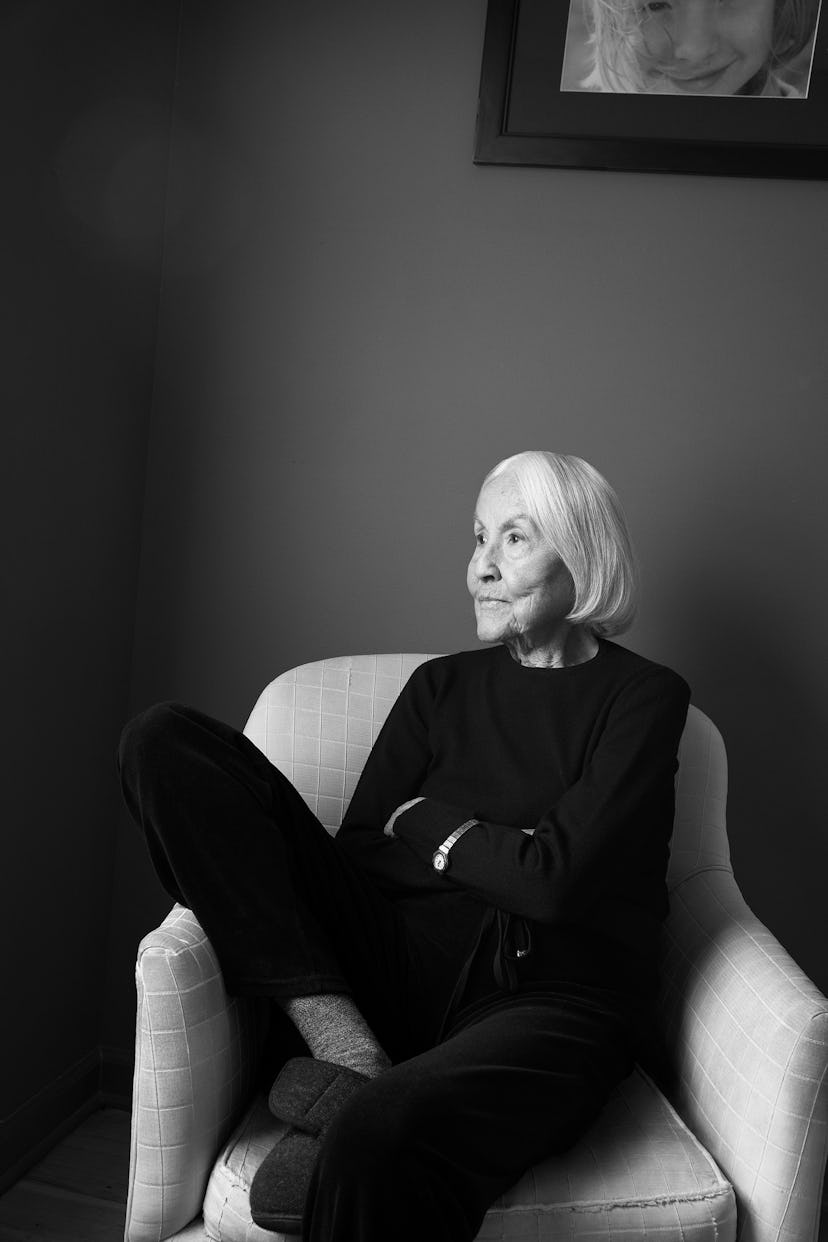Polly Mellen Refuses to Get Nostalgic
At almost 100 years old, the legendary fashion editor remains sharply focused on the future.

Last year, you gifted the Savannah College of Art and Design [SCAD] your archives, which document your legendary career as a fashion editor at Harper’s Bazaar, Vogue, and Allure from the 1950s through the 1990s. The files include your work with photographers such as Richard Avedon and Irving Penn, and correspondence with the Vogue editor Diana Vreeland. How did this decision come about?
I had shelves and shelves of boxes sitting in my house in Connecticut. People wanted me to donate them to all the obvious places, like the Met. But I wanted them to be where they could educate young people. André Leon Talley had been on the board of SCAD and said to me, “Please, Polly, consider SCAD. This is where they will do the most good.” My granddaughter Molly is actually a student there now.
Are your notebooks also there? You were known for taking extensive notes at shows and shoots.
I threw them out, which is a shame. But, you know, at the time you don’t think that you’re such a big cheese.
You were a famously demanding boss who struck fear into many fashion assistants’ hearts with the refrain “No is not an answer” and the expectation that they should run, not walk. I also heard that if anyone dared to talk loudly during a shoot, you wouldn’t hesitate to tell them, “Get out!” Is that true?
I would never say, “Get out!” What I would say, very nicely, is that there is no talking on the set. It didn’t have to do with me—it had to do with the photographer. If it was Dick Avedon, for instance, he liked people to be quiet so he could concentrate.
You collaborated with every important fashion photographer of your time, but Avedon is the one you are most associated with. What did you learn from him?
Extreme friendship. Quality of life. He made it possible for me to express what I was feeling.
Diana Vreeland clearly believed in you too. What do you think she saw in you?
A certain creativity, I suppose. A different approach to a subject. My approach was very often a bit avant-garde, shall we say. And because of that, I was an editor who was different.
What do you think shaped your eye?
Well, I loved the street. I felt that there was so much going on in the street that gave me insight into real life.
Who are some original designers, in your mind?
Rudi Gernreich, Marc Jacobs, Alexander McQueen. Nobody could replace McQueen. And Rei Kawakubo is an original, a daring original.
Even after you retired from magazines, at age 77, you kept up a freelance career for a time. How did you decide you were finally done?
I really didn’t want to do mediocre stuff, which is what a lot of the projects I was offered were. I said to myself, “That’s it. Go to the country, be with your family, and live a life, rather than mediocrity.”
Who is someone you think is well dressed today? Who would you have liked to photograph?
I admire Cate Blanchett’s individuality and her daring. I love Beyoncé; she’s fantastic. And the Kardashians. I’m fascinated by the whole Kardashian family. I mean, they are beyond rich and yet they are individual—Kim being the most original.
How do you view age now? Is being this age different from what you thought it would be?
No. I’m 99. I’m in my 100th year. And [knocks on wood] I’m feeling pretty well. I’m very happy living in the country with my daughter Leslie. I’ve become a semi-recluse, and I like where I am in life.
Another phrase you are known for is “I’m not a history major.” You have always been one to embrace the new. But at your age, isn’t there a part of you that misses the grand old days of fashion?
I love the memories, but I also love the present and the future. There are always people who want to compare, to talk about what Vogue was then and how it isn’t that today. But nothing is. Let’s not be nostalgic. Let’s not talk about what it used to be. Always forward.
Hair and Makeup by Mary Irwin for Surratt Cosmetics at Judy Casey. Photo Assistants: Milton Arellano, Chris Dinerman.